|
Early next month, All In Productions brings the rock musical NEXT TO NORMAL to the stage of the Next Act Theatre. The story of a contemporary suburban family dealing with mental illness and so much else opens on an intimate stage. Director Tim Backes took some time to answer a few questions about the show. The American musical has been around for over 100 years. Modern musical theatre offers such a huge scope of different possible productions. Why did you choose NEXT TO NORMAL for your next production? When we were sitting down to discuss our 2017 season, it was right after the elections in November. We knew we wanted to have a single unifying theme for the season, and given the state of our country in the immediate aftermath of the election and the amount of polarization and conflict in our society, we wanted to aim for a theme and for shows that would bring people together. There’s a tendency for theater companies and artists to want to make big, bold political or ideological statements with their work, but we didn’t want anything divisive. So we settled on the theme “Let’s Talk” in the hopes of doing shows that would create positive, constructive conversations about important issues rather than adding to the division. Next to Normal fit the theme perfectly. I would hope we can all agree that there needs to be more of a light shined on mental illness in the United States. There is still so much we do not know about the human brain, and as a result, there is such a stigma attached to conditions like bipolar disorder and depression. The show does a wonderful job of treating bipolar disorder responsibly, showing Diana as being a strong, capable woman in many regards while also not holding back on demonstrating the horrible ways in which the illness affects not only her, but her family. The show also fit what we were looking for logistically. We wanted to do a musical with a smaller cast that we thought would be a popular selection, having opted for shows people might not know as well over the last couple years. Next to Normal is a hit with theatergoers of all backgrounds for how genuine its characters are, how touching its story is, and yes, the great music. NEXT TO NORMAL is a delicate balance. There’s some really intense music balanced against harrowingly nuanced treatment of perilously heavy themes like drug abuse, mental illness and modern psychiatry. The productions that I’ve seen in the past have managed to tread a very precise path between the staginess of theatrical musical and the delicate nature of human drama. How are you balancing the musical and dramatic angles of the production? Great question. It’s extremely difficult. If there is any element of campiness to the show, particularly with regard to the way we treat mental illness, then the show not only loses its effectiveness, but becomes disrespectful. At the same time, we can’t be so heavy-handed with the serious nature of some of the themes that we lose sight of the moments of levity and hope that are sprinkled throughout the show. If I had to pick one word to describe Next to Normal it would be “human,” and humans are incredibly complex creatures. The biggest danger with Next to Normal is that the powerful rock music can become distracting for both the actor and the viewer. It’s easy for a production of the show to lose sight of its character-driven nature and turn into a belt-off, but that really detracts from the intimacy of the show. For me, the most important thing was taking the time early in the rehearsal process to get into the headspace of the characters and to discuss bipolar disorder and the most prevalent themes in the show. I met individually with each cast member to closely analyze the songs, the feelings of the characters and the stakes of each scene, all before we blocked a single scene. I wanted the cast to have as much time as possible to put themselves into the positions of their respective characters and really think through how Diana’s illness was affecting theme, far beyond any of the ways written into the script. We were also extremely fortunate to have Dr. Anthony Meyer, the former head of Aurora Psych, come in and give a talk to our cast and production team about his decades of experience in treating patients with bipolar disorder. He had some incredible insights, and it really set the tone for the rest of our rehearsal process. You recently posted an image from your first time in the theatre. It’s the back of your head. A few chairs. A few actors. A cello. It’s cool seeing an image of a rehearsal literally from the director’s perspective. I would imagine that there’s a lot going on for you during a rehearsal that wouldn’t be visible from any picture. How much of the total production are you seeing in your head when you’re rehearsing at the venue for the first time? Is there a point early on when you have to start fusing your internal conception of the show with the space you’ll be performing in?
It was a really amazing feeling to finally be able to get into the Next Act space and get a feel for the spacing and the actual pictures the audience is going to be seeing. Even without any of our set pieces in place yet, it just feels so much more like a real show when you get in there. So from a director’s standpoint, yeah—suddenly you are seeing everything at once with so much more clarity, and it’s a whole lot to process. You can suddenly get a better sense of how lighting will work in certain scenes, or whether you might need to move a certain set piece a little bit to improve sightlines. The conception of the show has to be present throughout the entire process. We knew we wanted to create a more intimate, scaled back version of the show, getting rid of the “rock concert” aura that the Broadway production and many other productions tend to use and opting for building an actual, simple home instead. That guided everything we did, long before we even had a cast. But when blocking (and acting), it’s so hard to get an accurate sense of the pictures you are creating for the audience when you’re not in the actual space, especially a space as intimate and unique as Next Act. The Next Act Theatre’s thrust stage poses interesting challenges to any production. The thrust stage can be difficult to work with. I remember Robby McGhee doing a really good job of filling the space from all angles with his production of The Wild Party for All-In. What’s it like directing a show for the Next Act Theatre space? Having three sides of the stage surrounded by audience is a tremendous challenge. As I said in the last question, you can’t really get an accurate sense of what you’re dealing with until you really see the blocking for the first time in the space. We’ve had to make a few adjustments to ensure our sightlines were correct and that we’re giving each side of the stage enough love. The tough part is that you have to come to peace with the fact that not every single person in the audience will have a clear shot at every actor’s face at all times, just by the nature of how the stage is set up and by how many times in the script there are split scenes happening. But I think we have done a good job of being conscious of each side of the audience’s perspective of the action. Despite these challenges, I have to say this is one of my favorite places in Milwaukee to see and do a show. The audience is right up close and personal to the stage. Considering how much of the focus for our production of this show has been on investigating the internal struggles of each character, the layout of the theater puts the audience right into those characters’ world, and I think it is going to make what’s already an extremely powerful show that much more emotional and affecting. You’re really good about posting on social media. It’s cool to see a timeline of the show: June 29: auditions. July 2: Official announcement of the cast. July 8: official announcement on Facebook. July 24: first read through. August 24: designer run. I love the ongoing background on the production being visible on social media. Do you feel as though the increased behind-the-scenes visibility increases the pressure on a production? There may be some element of that, but I think using social media like that gets people more invested in the journey we are taking with the show and more interested in coming out and seeing the end result of the process they’ve been following. Honestly, most of the pressure I feel for this show is pressure I put on myself. I’m directing a show a lot of people know and love with a company that has been quite fortunate to receive some very positive feedback to our shows in our first several seasons. I came into the process knowing All In Productions had a growing reputation in our theater community that I needed to not just uphold, but expand, and I do not take that responsibility lightly at all. Add in the fact that I’m a first-time director, and it’s quite a lot to handle sometimes. Fortunately, I’ve been blessed with an incredible support system throughout the process. Almost my entire production team has worked with All In Productions before and was able to hit the ground running because they know how we do things. The AIP board has been very supportive. Robby McGhee is serving as my assistant director for the show, and he’s been an incredible mentor, partner and sounding board. And I can’t say enough great things about the cast. These are people who really care about their roles and this show. For many of them, they’re taking on dream roles, and you can see every day how they are not taking this opportunity for granted. I’m so proud of the work they’ve put in. As I write this, you’re only a couple of weeks away from opening. What are you learning about the show now that everything is snapping together less than 14 days from opening night? We have really been able to make the adjustment from “let’s work this song and make sure we have the blocking right” to “let’s really dive into these characters and this story and see what we can discover.” It’s been fun watching the cast make discoveries about their roles and dissect each song, and I’m really excited to see how their understanding of their parts and of the overall humanity of the show continues to deepen over the final couple weeks we have before we open, and how that manifests itself in the choices they make on stage. All In Productions' staging of Next to Normal runs Sep. 7 – 16 at the Next Act Theatre space on 255 S. Water St. For ticket reservations and more, visit All In online.
0 Comments
The second and final performance was sold-out. Director Jill Anna Ponasik could be seen at the last minute swiftly rushing about the theatre with folding chairs for those of us who arrived fifteen minutes before the show was scheduled to start. Milwaukee Opera Theatre and Theater RED’s two-performance production of A Chorus Line was one of those rare events in local theatre that brings a huge number of different people together from a wide range of different ends of the Milwaukee theatre scene. I ended up in one of the folding chairs Ponasik put down right in front of the stage. Quite an immersive experience. The cast of the show milled about in character as dancers waiting for an audition to start. Looking into the faces of those onstage I kept having, “oh yeah, that’s right: (S)HE’s in this show too,” moments. They were all very recognizable and all quite talented. Joe Pichetti had a cooly authoritative poise about him as Zach: the guy in charge of the audition. Beth Mulkerron had considerable uplifting gravitas as Cassie--the dancer who shared a past with him. The show doesn’t give Cassie and Zach a whole lot of time to develop a connection that is supposed to be really, really intense. Mulkerron and Pichetti managed a strikingly vivid portrayal of a couple of people who had known each other quite well in some distant past in spite of relatively little time together onstage. The rest of the show is a big parade of different performances all isolated onstage. Here are general impressions in no particular order: Karen Estrada and Doug Jarecki have known each other for years. Here they played the newly married couple. He played brash clueless encouragement with blunt comic flare finishing all her sentences. She was an unassuming dynamo of sweetness as a character trying her best to assert herself in the challenge of the situation. Always nice to see both of them onstage. Local musical theatre icon David Flores can dance. Really well. (I don’t recall ever seeing him dance before.) He played Mike...the one who tells of his love of dance discovered while going to classes with his sister. There’s a deep charm in Flores’ execution. C. Michael Wright doesn’t do enough onstage. I don’t care if he’s in every single show there is. The Producing Artistic Director of Milwaukee Chamber Theatre is an amazing actor in his own right. Here he played Paul...a character who comes to the audition with what is likely the most complex and dramatically textured story of all the characters. Wright’s earnest, unflinching portrayal of the character was easily one of the best dramatic performances in the whole production. Karl Miller has also been behind the curtain quite a lot lately. Nice to see him onstage as well. Here he played Bobby...a charmingly egotistical borderline sociopath with a heart of gold. (At least that’s how Miller played it...totally open and cheerful so long as Bobby was talking about himself. A fun role for Miller.) Marcee Doherty-Elst was a bit of a force of nature onstage as Val--she who would probably kill to get as close to the center of the spotlight as possible. Her distinct take on the Val’s “Dance: Ten Looks: Three” was dynamic enough to light-up the whole audience. Of course, Val is just a few auditions or a few more years away from becoming Sheila--a tough as nails dance veteran played with deadpan aggression by Angela Iannone. The production was filled with so many other little moments of crisp characterization by Bill Jackson and Joel Kopischke and Melissa Kelly Cardamone and Mark Bucher and James Zager and on and on and on... Then there was real talent on the margins of the stage too. Zachary Dean and James Carington and Stephanie Staszak...well...it’s a big ensemble and a show like this can afford to put really, really good, young talent along the edges of much more established local theater stars. Really it’s just remarkable that Milwaukee Opera Theatre and Theater RED managed to bring so many people together onstage at once without like...ripping a hole in the fabric of spacetime or something. A Chorus Line only ran for two performances. Further information on Theater RED’s upcoming schedule will become available on their website. Milwaukee Opera Theatre’s next collaboration will be with Skylight Music Theatre in March as both companies present a staging of Offenbach’s The Tales of Hoffmann. For more information, visit Milwaukee Opera Theatre online. The dramatic action/adventure genre isn’t something one normally associates with live theatre. Quick pacing and fight choreography and such are commonly thought to best reside in flat, glowing rectangles. Pop adventure theatre IS possible, though. One of its best local practitioners made a quick appearance onstage last Sunday. Liz Shipe's new pop adventure theatre show The Incredible Adventure of Alvin Tatlock made a humble initial expedition to the stage on the final evening of the Milwaukee Fringe Festival. The concise one-hour adventure featured Liz Shipe as an adventurer named Gertie Pike. Tall, affable Sean Duncan had a reserved charisma about him as mild-mannered Alvin Tatlock--a very precise sort of person who is swept-up in Gertie's search for the legacy of her father. Also appearing were Brian Quinn as a charming narrator and Robert Thomas Schmeling in a variety of supporting roles. Though the pacing of the adventure in Alvin Tatlock feels ever-so-slightly uneven in places, the overall intensity of the action is very engrossing. Shipe and company do and excellent job of bringing sweeping adventure to the stage with a little more than a bench and a few odd props. The ensemble is strikingly compelling in the delivery of the action. You don’t need big explosions and huge sets and massive scores and quick edits to get something that feels like Allan Quatermain or Tarzan or Indiana Jones or Jack Flanders or Lara Croft. All you need is actors who seem convinced enough that the adventure is real...actors who are in close proximity on a small stage. THAT is where the adventure truly lies...because it doesn’t matter how big the CGI is or how big the explosions are if we don’t care about the characters. The cast of Tatlock does an excellent job of bringing across the full reality of the adventure on a relatively bare stage. (Michael Bay and James Cameron could learn a lot from Shipe.) It’s a fun hour. Shipe’s plot borrows from a lot of popular adventure fiction which has been told and retold over and over again. My favorite bits of the script seem (probably unbeknownst to Shipe) to echo the serial narrative voices of Douglas Adams or Metball Fulton or Chris Claremont who were themselves echoing of various other bits of adventure comedy that have reverberated through pop fiction over the years. The list of Shipe’s shows has grown quite a bit in the recent past. It seems like every year she’s doing something new. Over the years and very many shows that she's written or what becomes clear is that she's really, really good with cleverly funny adventure dialogue. What Shipe brings to the mix is some strikingly sharp dialogue. There’s a clever sense of fun about the way the characters talk to each other. In the role of Gertie, Shipe has given herself some really cunning bits of dialogue. The script is friendly and familiar--with a style and a flow reminiscent of so many contemporary action stories. (Actually there seem to be A LOT of echoes in this script coming from the 2001 Tomb Raider movie: wealthy young British adventurer in the shadow of her father racing against others to get ancient treasure. There's even a sort of a parallel clock motif.) Plot elements may be heavily recycled but the heart of the story that's being told feels very fresh and unique because of the way that Shipe bends the dialogue around the characters in an ensemble that she's taken great care in bringing together. It's all so a well-balanced. And it's framed as the first in what could be a whole series for Shipe. The Incredible Adventure of Alvin Tatlock was announced as a one-off. With a debut like this, I would love to see a few or a few dozen more trips to the stage with Gertie and Alvin. Shipe has already announced that plans are in place for future Tatlockery, "in the near-ish." For more information as it becomes available, keep in touch with Reconstructing Grimm's Facebook page. Theatre Gigante opened its 30th season at the Milwaukee Fringe Festival this year with a single half-hour performance. Lexington Avenue was a perfect example of precisely the sort of thing that Gigante does so well...a simple abstract narrative. Stripped of so much of the ancillary bits that bog down so many staged narratives, Gigante focused for a single half hour on a connection between two performers and two characters. The words were by the late Frank O’Hara. The music was by Jason Powell. Gigante had turned a dramatic duet of a monologue by a poet and playwright and turned it into a beautifully operatic, little half hour onstage between Powell and Erin Hartman with musical accompaniment by Anne Van Deusen. There were simple lights. Primary colors. Simple movements. Moods, motions and emotions flitted about quite dramatically onstage between actors and characters in a story that was very vivid and intricate. The characters lived for a half hour amidst the many vicissitudes that live in love as two fall into it in an ever-changing world. So much theatre tries to ground itself in the literal. Concrete reality IS something that feels that much more powerful on the small stage than it does on a screen of any size, but it’s far more familiar. There’s comfort in the familiar, but it can be very, very difficult to get something genuine out of a realistically-rendered plot that plays out over the course of an hour and a half or more with intermission. What Gigante did with Lexington Avenue is what they’ve done so very, very well over the course of the past ten or so years of their total thirty that I’ve had the pleasure of seeing...something primal exists in the abstractions of simple movements and bits of dialogue that no realistically grounded artifice could ever manage no matter how brilliantly rendered the sets, costuming and lighting might be. Frank O’Hara is in good company on the coming season with the company. Theatre Gigante’s 30th includes four more shows drawing inspiration from authors Edgar Rice Burroughs and Franz Kafka, filmmaker Akira Kurosawa and the sparklingly witty 20th century German transvestite Charlotte Von Mahlsdorf. All remaining shows on the coming season take place at UWM’s Kenilworth Studio 508 Theatre. For more information, visit Theatre Gigante online. The Battery Factory opened this year's Milwaukee Fringe Fest with something of a weird, surrealist variety program. Kirk Thomsen and Posy Knight played security agents in sunglasses who were milling about Todd Wehr Hall. Audience members were handed ridiculously large programs with bits of text hand written on them. The stage was littered with paper. There was a beach chair, a piano and a flat T-Rex standee of respectable size onstage. This was the first show on the festival. It was 1:00 pm and already things were getting a little weird.
This was the opening of Chad M. Piechocki's Valentine 3: Etymology (and a comedy.) The cloying edges of a slightly grating Piechocki was tempered onstage by the effervescent charm of Cree Myles in the central framing narrative where the two performers were looking to try to travel into the past to improve the future. Doomed to failure from the start, the attempt at time travel involved the rolling of office chairs and the wearing of corrugated paperboard boxes over the performers heads. There was also poetry. Strange bits of text (evidently from a Polish poet) were read off the cards we were all given. So much of the interaction between the two of them felt like an attempt to draw something beautiful out of scattered moments that seem very under planned and remarkably repetitious. That this didn't come across as being annoying in the least says a lot about the powerfully casual charisma of Cree Myles. Kirk Thomsen and Posy Knight were given space for some interesting dance onstage as lizard hybrids from a different time. It was an interesting contrast with the secret service-style security agents they were playing for much of the rest of the show. The whole thing ended with some classy, soulful jazz piano by some cat from New Orleans not actually mentioned in the program. It was a really sharp way to end the strangely misshapen hour of performance. The remarkable thing about it was the fact that it was as cohesive considering how scattered it seemed at any given moment. In so many instances the overall flow of the show as conceived by Piechocki seemed to be trying way too hard to be clever and at the same time seemed be a product of little if any effort. The balance between these two elements of the show exhibit a strangely entertaining sense of framing on the part of Piechocki. The Milwaukee Fringe Festival continues today in and around the Marcus Center downtown. For more information, visit Milwaukee Fringe Fest online. Piechocki and Myles perform again at the festival as a part of Dasha Kelly's Talkin' About Home at 4:30 pm at Vogel Hall. At month’s end Bard & Bourbon will be staging its next foray into drunken Shakespeare with TWELFTH NIGHT. The premise usually runs something like this: one member of the cast (who is often playing multiple roles) is given a few shots of hard liquor at intervals over the course of a performance. As the show progresses, one member of the cast gets progressively more and more intoxicated. This time round, however, there will be TWO cast members getting drunk over the course of every performance. Of course, the cast member gets a ride home and everything is played quite responsibly. The audience is encouraged to follow suit. Bard & Bourbon’s Katie Merriman answered a few questions about the group for The Small Stage: Bard & Bourbon has a history that goes back a couple of years now. In two years it feels like you’ve maintained a really solid core group of talent. To what do you owe your success in keeping so many people together? I think part of the magic starts in the audition room. Obviously we look for actors with skill at handling the text but even more important than that is creating a team of actors who can work well together and who are able to put egos and individual performances aside to support the show as a whole. Then in rehearsals and performances we keep the focus on having fun. It often leads to a really bonded group who can’t wait to see each other again for future shows. On top of that, the nontraditional approach we’ve taken to casting in terms of age, gender, etc. means that we’ve been able to challenge actors with roles for which they normally wouldn’t even be considered. We’ve been very conscious to avoid getting in a rut with the actors we cast and the roles we put them in so that each show is unexpected, fresh, and fun for both the cast and the audience. I think that chance to step outside of the predictable is really appealing to a lot of actors. From the theatre seats, everything seems so well-balanced in a B&B show. Your approach to Shakespeare always feels so quick and enjoyable. With minimal production elements, you’re focussing directly on the script. The size of the venues always feel just about right. It even feels like you’ve got the branding of the company more or less perfect. How satisfied have YOU been with your productions so far? First of all, thanks for that! I’ve been thrilled. This was such a crazy concept from the start, made all the more crazy when you consider I had no directing or producing experience prior to starting the company. To see it come together so well, so quickly has been a fantastic surprise. Romeo and Juliet was the show where I felt like everything started to really come together for us, especially in terms of branding and feeling confident about staging. Ultimately, I just try to create a show that I would want to see and luckily, it seems like a lot of people in Milwaukee agree with me! Is there anything that you wish you could do but haven’t been able to due to restrictions on budget, time or any other constraints? We’ve had such a great creative team for each show that we really haven’t been held back in terms of anything big that we’d like to accomplish, even if we did have to occasionally MacGyver our way to a solution. Though being able to pay those creative folks more and hire more skilled artists to help with that process would make life a little easier for all of us! As we grow, we’d love to continue improving the quality of our props and costume pieces as well as purchase some weapons so we can continue bringing our audience amazing stage fights. Having one actor drink over the course of the show could be seen as a bit of a superficial gimmick. How much does the bourbon in Bard & Bourbon actually inform on any given production? Frankly, we also expected the added bourbon to be more gimmicky than it ended up being. Instead we found that it was forcing us to look at the play anew because when you don’t know what affect the alcohol will have on your fellow actor, you tend to pay a lot more genuine attention to what that actor is saying and doing. Sometimes it brings out the heartbreak or horror, sometimes it brings out the humor – oftentimes in scenes where you’d least expect it. Up to this point, it’s always been just the one person drinking. With TWELFTH NIGHT you’re having TWO actors imbibing over the course of the show. How did you decide to have two drunks for each performance this time around? With every play we do, we like to push the bounds of what we’ve done in the past. Sometimes it works, sometimes it doesn’t, but we always want to be trying new things. In the case of TWELFTH NIGHT, we’re playing with setting the show in a specific time period with more extensive set and costuming than we’ve ever done and doubling up on the drunks! Since it is a play about twins, having a pair of drunks seemed rather appropriate. This is also one of those plays where the separate plotlines don’t overlap much until the very end which means that for the most part we are able to have the drunk actors featured in alternating scenes rather than competing for attention within the same scene. You’ve done HAMLET and MACBETH and MIDSUMMER and ROMEO & JULIET and MUCH ADO...and now TWELFTH NIGHT. It feels like you’re starting to run out of the mega-popular “blockbuster” Shakespeare scripts. Are you making a determined journey through the complete works as B&B moves into the future or do you think you might circle back around at some point and do the bigger name shows again? I’m sure we’ll circle back around to some of the perennial favorites sooner than we’ll repeat a show like Henry VIII or Timon of Athens, but we would like to work our way through the whole cannon eventually. In fact, within the next year or two we’re hoping to start a histories series, producing one or two of the history plays each year in chronological order beginning with King John. There are some really wonderful things to discover in the lesser known plays so we hope that our fans will give us the chance to show them off in Bard & Bourbon style. Bard & Bourbon’s staging of Twelfth Night runs Aug. 31 - Sep. 3 at the Tenth Street Theatre on 628 N. Tenth St. For more information, visit Bard & Bourbon online. The cozy space of the Best Place was packed last Sunday night. The late 19th century beer hall in the Historic Pabst Brewery was the perfect backdrop for Amanda Marquardt’s Schmutziges Deutsche Kabarett--a Weimar-era German inspired by the Kander and Ebb musical Cabaret. It plays like a production of the Kander and Ebb musical without all the heavy drama. Nothing here but fun, lighthearted song-and-dance fare. It’s a really simple idea, but it plays remarkably well. Catchy, little songs with playful lyrics fill the tiny space as women dance around with a high-spirited sensuality. One song follows another in quick succession amidst quick little bits of wit. The cast is a fun blending of burlesque and musical theatre types. Vibrant and distinctive talents like Sarah Sefeldt and Jenn Turner were accompanied by guest singer “Lilly Sparrow from New York. Sparrow had some rather impressive moments over the course of the show including an engrossing rendition of Cab Calloway’s “Minnie the Moocher.” The show is hosted by Marquardt herself. She looks like Sally Bowles while performing like a Weimar Kabrett host complete with German accent. She lent a classy air to the proceedings, singing songs like Brecht’s original ballad of Macheath and the Viennese precursor to Louis Prima’s, “Just a Gigolo.” The show had completely sold out. The lines for beer were quite long. There was also bratwurst. The atmosphere was so energetic that it was easy to forget that it was a Sunday night. While it’s a bit larger than some of the smaller stages in town, The Best Place isn’t that big. The Sunday night crowd’s energy was nearly as impressive as anything that was going on onstage. I’ve rarely seen that much energy fill that small a space on any night of the week. So often there’s really nuanced material being presented on smaller stages that takes advantage of the intimate environment, but here the energy brought into the space by the audience made it feel larger than life. Congratulations to Marquardt and company on a successful sold-out one-night-only event. For more information about upcoming performances (which feel more or less pleasantly inevitable at this stage) visit Schmutziges Deutsche Kabarett’s Facebook page. There’s a lot going on at the Milwaukee Fringe Festival this year. One brief performance nestled in between all of the other disparate fare on the schedule is The Dance of Moons & Buckets--an abstract solo movement piece in which Selena Milewski explores a young woman’s journey through an abusive relationship. Abuse comes in many forms. According to The National Coalition Against Domestic Violence, a US woman is assaulted or beat once every 9 seconds. (Disturbing to think of over 100 assaults will happen in the US in the time it takes for Milewski to get through the performance.) This is just PHYSICAL abuse, though. This doesn’t take into account all of the truly ugly aggression that people suffer in relationships. 20 million people are physically abused in this country annually. In light of how much more common verbal and emotional abuse must be, it’s staggering to think about how universal it must be. Milewkski’s abstract performance piece offers the opportunity to explore issues of abuse that go far beyond the physical. Milewski is accompanied in her performance by a couple of kōkens (stage assistants) and the overriding symbols of a moon a bucket. She took the time to answer a few questions for The Small Stage. What’s the history of The Dance of Moons & Buckets? Is this the first time you’ve performed it? Yes. This is the first performance. The idea has been gestating for about two years, however. This is just one performance for the festival. You’ve done shows with much longer runs than this, obviously. How is it different preparing for a performance that’s going to live onstage for less than one hour at the end of the month? I’ve not found the preparation itself to be particularly different. There’s a given amount of work and a given amount of time in which to accomplish it. Once a show opens, that work is largely done—whether that show has one performance or a dozen. Certainly there’s an increased desire to create the very best offering I can since I’ve only got the one shot. The promo pic included on the fringe fest website has you in white against a black background. There’s black. There’s white. There’s a moon. There’s a bucket. There’s you and a couple of kokens. How can we expect it to all flow together for the performance? This piece is the narrative of a personal story from my past told through movement. This is not my native mode of expression. I come from the world of words, scripts and straight acting and singing, not from the world of dance. I based “The Dance of Moons & Buckets'" structure on that of a classic five-act play to give myself a grounding in the familiar as I explored a new mode of expression that I believe will best express the content and make the story more meaningful to a greater number of people. Each section has a distinct soundtrack, emotional quality and portion of story to tell. I’ve titled the five sections: 1) Falling in Love, 2) Grief Interrupted, 3) Betrayal and Death, 4) The Birth of Blanche: Queen of Ice and Artifice, 5) Alone. While the piece has a specific story arc for me, I’ve chosen an abstract style because I do hope that viewers will find and create meaning for themselves. What can viewers expect in terms of the symbolic elements included? My personal journey played out in solo movement sections, as well as interplay between me and the kokens, who manipulate buckets of various sizes and perform other roles primarily related to set movement. Also, an enormous moon set piece with one dramatic, kinetic moment of its own. While the abstract performance DOES have the opportunity to speak to certain universals about abuse and abusive relationships, doesn’t the beautiful abstraction of dance run the risk of washing away some of the ugliness of the abuse you’re exploring here? There may be that potential, of course, but I also believe an Emily Dickinson maxim applies here: “Tell all the truth but tell it slant.” That is to say, sometimes the best way to address an important and challenging topic is with a sidelong approach that engages unconscious and intuitive processing, rather than conscious and rational processing alone. Moreover, beautiful as movement pieces can be, there is a good deal of deliberate ugliness incorporated here, both in the musical score and physical score. I’m attempting to cover a broad range of experience in a short amount of time, drawing on everything from the blissful head-in-the-clouds sentiments of falling in love to the horror of betrayal and suicidal ideation. It’s also worth noting that, although the plotline tracks a distinct series of events, this is something of an internal monologue delivered through movement. Much of the action you see reflects what the subject is feeling and thinking as events unfold. For instance, during the second section we look in on her “stages of grief” and how they are interrupted when her former partner repeatedly comes back into her life, eventually leading to long-term re-engagement. The Dance of Moons & Buckets makes its way to the Wilson Theatre at Vogel Hall on Sunday, Aug. 27 at 3:15 pm. It is on a program with Lake Arts Projects Mentoring Hope. For more information, visit the Milwaukee Fringe Fest Online.
The drama tent at Milwaukee Irish Fest is exactly what I love about small stage theatre. File through South Gate and there are people moving around from place to place. There’s bass, bluster and beer coming from every corner of the fest. Carve your way back far enough and there’s a quiet, little tent with row after row of folding chairs. With minimal set and costuming, a small drama plays out on a small stage for a small audience. So many people are going through the motions of enjoying a festival outside the tent. Inside there are just a few people making a connection. It’s a deeply personal art. At it’s best, it’s a closer connection with art that is deeply social. Early yesterday afternoon, the drama tent at Irish Fest became home to Milwaukee Irish Arts’ Fred and Jane--a two-woman drama by Sebastian Barry. Margaret Casey and Lindsay Gagliano play a couple of nuns who have known each other for years. The format of Casey’s drama has the two nuns relating stories of friendship for the benefit of a documentary camera. On the stage under the tent, Barry and Gagliano’s rendering of the social drama feels very much like a warm social conversation between two actresses, to characters and an audience on a casual summer afternoon. Barry’s story of two women with a very close emotional connection contrasts an older nun with a colleague young enough to be her daughter. Casey had a very relaxed presence onstage. The character had been through decades as an Irish nun. She talks of life in the country before becoming a nun. Gagliano plays a woman who had dreamed of life as an actress prior to becoming a nun. The relationship between the two isn’t quite a mother/daughter relationship. It was something a lot more difficult to define. Pleasant interaction gives way to something much more deep when the two characters began to discuss life away from each other as the younger nun was sent away to serve in England. Life away from each other turned out to be quite difficult in ways neither of them had expected. There’s a deep connection there. It’s a very tender emotional tale of friendship, which is rarely focussed on with the kind of focus that Barry gives it here. The real challenge for any pair of actresses with a script like this is to accurately depict the kind of familiarity that the two characters are expressing. As inherently social creatures, we know when we see two people who have known each other for decades. It’s difficult to describe that distinct rapport over a decade of familiarity gives two people. We know it when we see it and we know when it isn’t actually there. As an audience, we know that actors playing characters rarely have the opportunity to work with other actors who they’ve got that kind of familiarity with. So as an audience, we’re doing at least some of the work of making two actors seem genuinely familiar with each other. To their credit, Gagliano and Casey manage a very convincing familiarity, respect and affection for each other that comes across quite well. It’s less than an hour under a tent in summer with a couple of actresses playing a couple of nuns. Amidst all of the lighthearted reverie and all the cultural trappings of Ireland, there’s an opportunity to make a brief emotional brush with something that feels very honest and genuine. Fred and Jane is performed once more today (Aug. 20) at 3:30 p.m. at the Theatre Pavilion near South Gate on the Summerfest grounds. For more information, visit Milwaukee Irish Fest online. It’s really difficult to know just how precisely to approach Off The Wall Theatre’s Whatever Happened to Baby Jane? On the surface, it’s just good, silly, campy humor. Over the course of the run of the show, local theater veterans Jeremy Welter and Mark Hagen take turns playing Betty Davis and Joan Crawford in a staged spoof of the classic 1962 movie. There’s nothing too complicated going on here. Look a little deeper and it gets really, really weird, though. It started out as a book. Then there was a film adaptation. Then a flurry of different stage adaptations. (Gutzman’s adaptation is...all his own...) Camp /kamp/ informal adjective adjective: camp 1. deliberately exaggerated and theatrical in style, typically for humorous effect. Philip Core referred to camp as: “the lie that tells the truth.” Theatrical exaggerations broadcast emotional reality in garish amplifications which are more honest than any realistic portrayal. The camp had been driven into dramatic adaptations of Whatever Happened to Baby Jane from the first film. Davis and Crawford were playing theatrically exaggerated emotional mutations of themselves in a production which evidently did little to endear the two actresses to each other. Gutzman’s treatment of the story is deliberately comic. It’s both a spoof of the movie and a light comedy that stands entirely on its own. You don’t have to know the movie to know the play...but the subject matter being given the comic treatment here is actually quite dark. Welter (or Hagen) plays--Blanche a wealthy, aging actress who is bound to a wheelchair. Hagen (or Welter) plays her sister Jane--an actress who hasn’t been nearly as successful. Jane is vicious to Blanche, who valiantly attempts to escape the domestic prison her sister presides over. Exorcising Demons in a Sweaty, Little Box So it’s a campy light comedy about unlawful human incarceration. It’s a comedy about a criminally sadistic reaction to jealousy and resentment. Overly-dramatic representations of the darker side of human behavior get a cackle and a crooked grin from a tiny, little stage in a hot and stuffy room packed with people. It’s almost comic just how ugly it all is. Exit into the relatively fresh air of a late summer evening in downtown Milwaukee and one is struck by the strange meta-comedy of it all. People are going to watch someone be truly cruel to another human being and...laugh at it because it’s a campy amplification. We Are All Blanche (The Political Thing) There’s interesting satirical symbolism here. Wheelchair-bound Blanche tries to be heroic as possible while being ruled over by an ugly, semi-psychotic narcissist with bad hair. This sounds VERY familiar given the current political climate. We are all Blanche. The first step to recovery is laughter. I think we’ve all accomplished that much. Let’s hope we’re all able to get on with things before we all end up dying on some weird existential beach that doesn’t actually exist as the lights fade on this tragic, tragic comedy. Off the Wall Theatre’s production of Whatever Happened to Baby Jane? runs through Aug. 27 at the cozy, little space on 127 E. Wells St. For ticket reservations and more visit Off The Wall online. A more coherent review of the show runs in the next print edition of The Shepherd-Express. |
Russ BickerstaffArchives
July 2024
Categories |

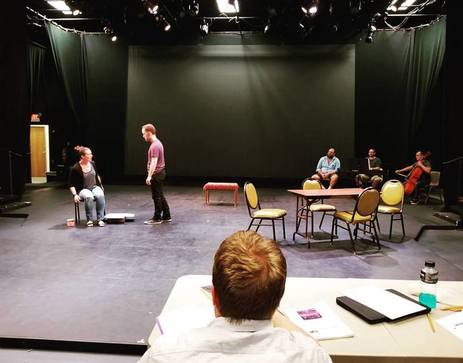

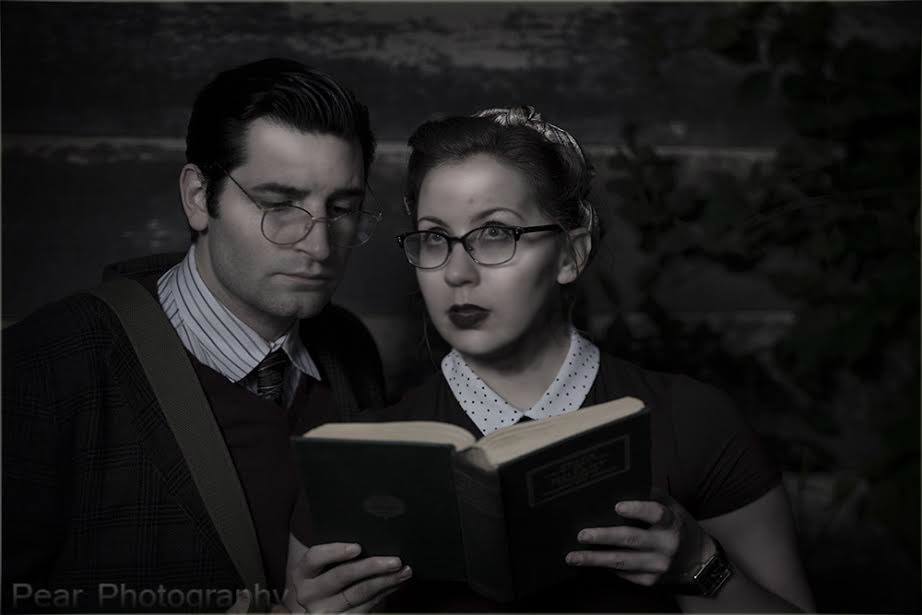
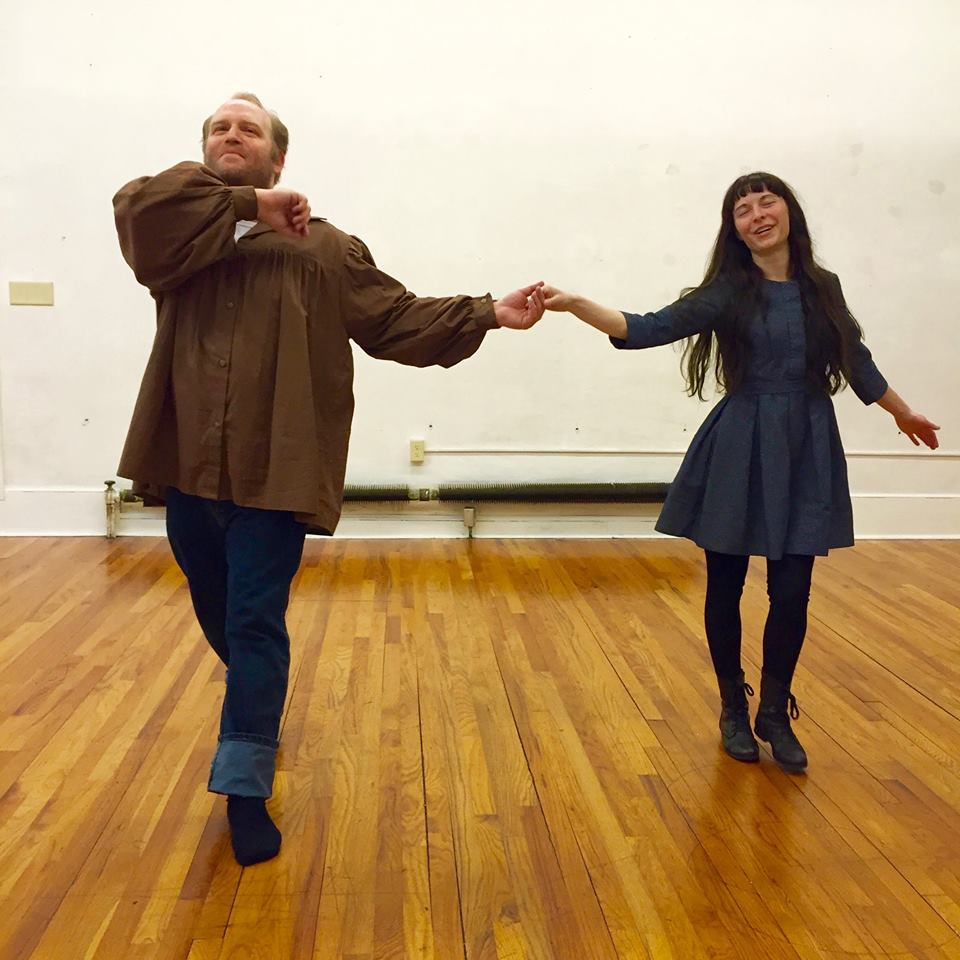

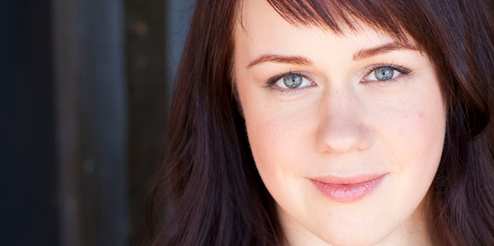
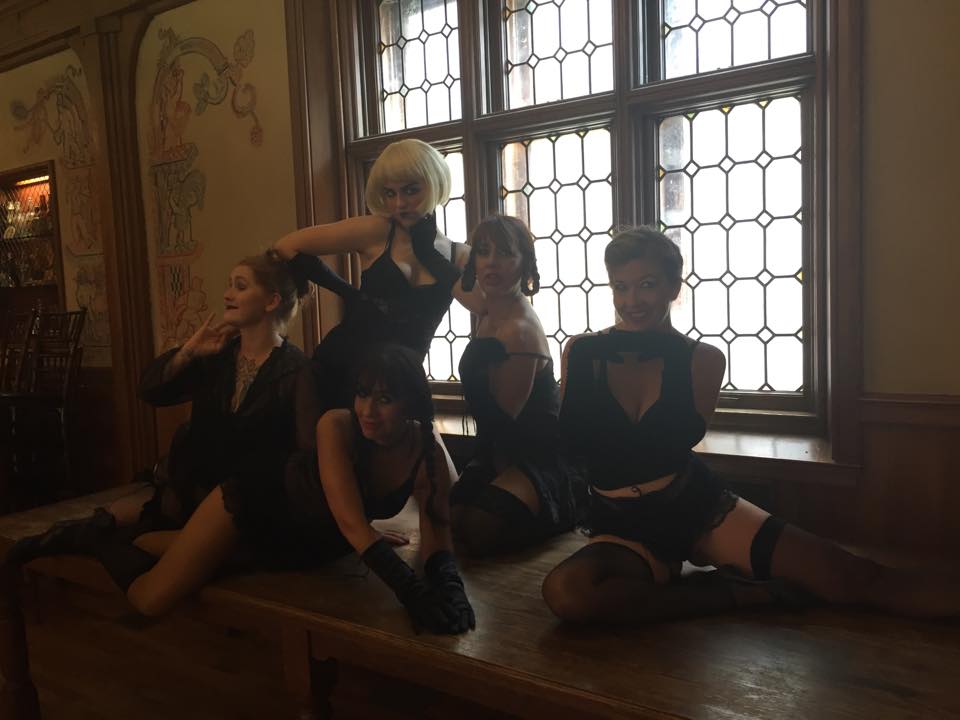
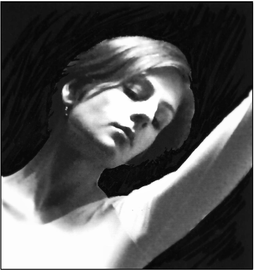
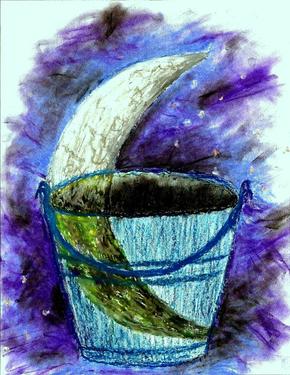

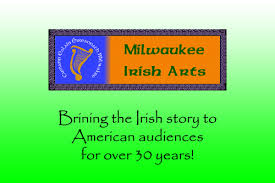
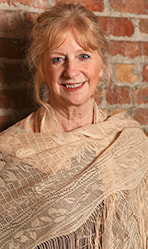
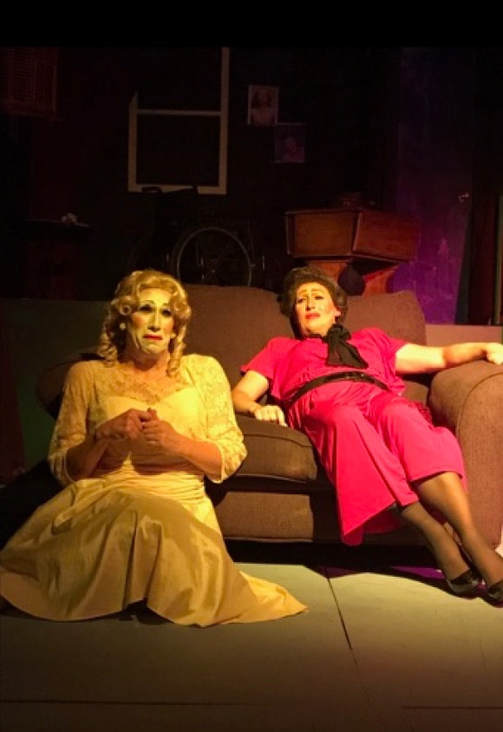
 RSS Feed
RSS Feed
